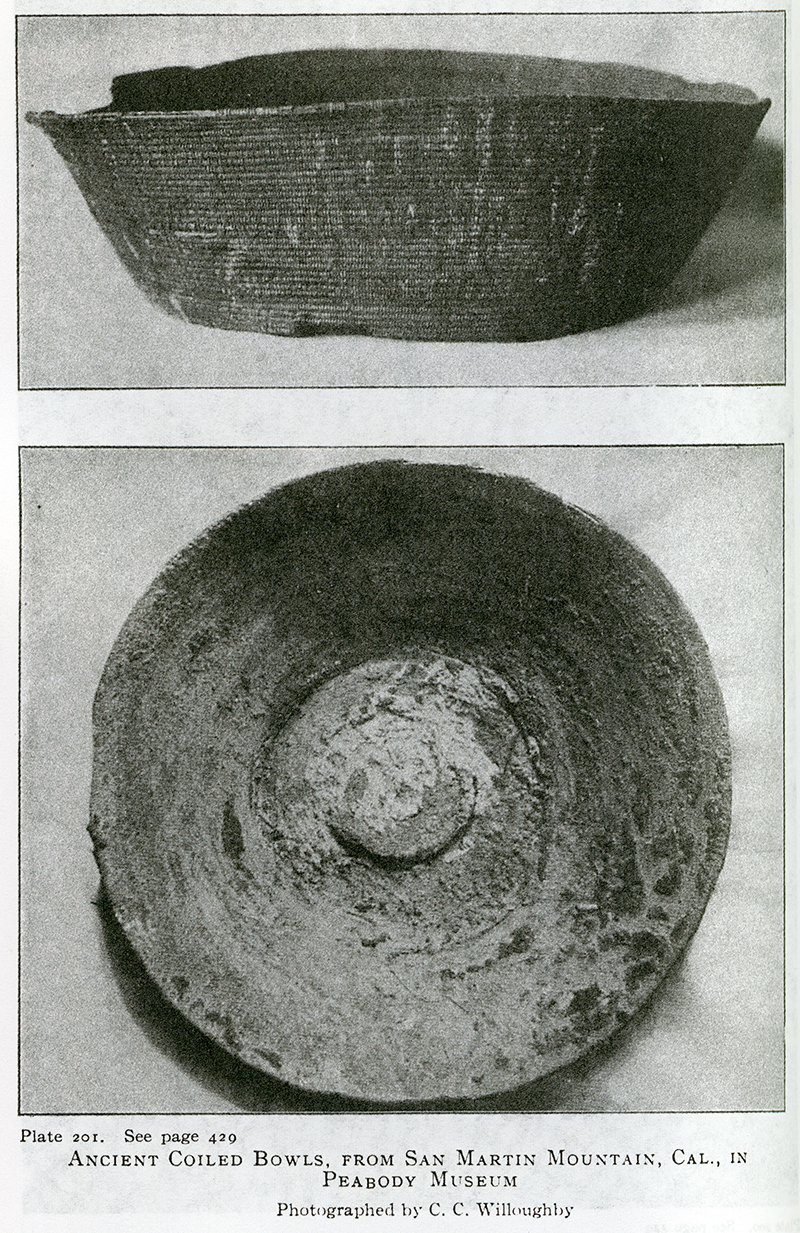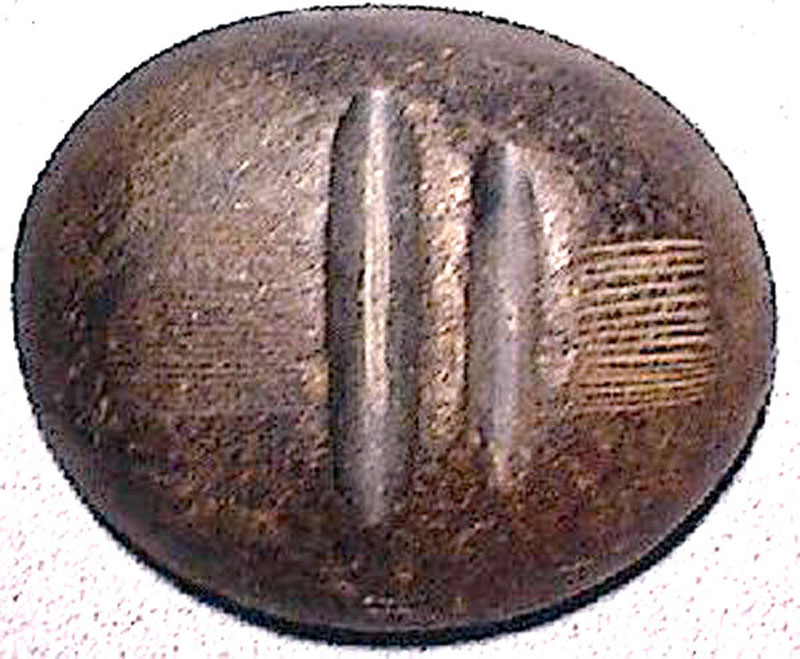|
|
Tataviam Culture

Click image to enlarge
Above and below: Four Tataviam baskets from Bowers Cave in the San Martin Mountains (present-day Val Verde), depicted in Mason (1904). Photographs by C.C. Willoughby, who in 1904 was the assistant curator of the Peabody Museum at Harvard University, where the Bowers Cave artifacts reside. Willoughby had joined the Peabody in 1891-92 and worked his way up the ranks, becoming chief assistant in 1894, assistant curator in 1899, assistant director in 1913 and museum director in 1915. He retired from the position in 1928. The Bowers Cave artifacts include the only confirmed examples of Tataviam basketry. The baskets and other cultural materials were probably deposited in the cache cave between 1802 and 1811, when local Indian villagers were brought by Spanish soldiers and missionaries to the Mission San Fernando Rey de España. The materials were discovered by some young ranchers in 1884 and sold to Stephen Bowers, who collected Native American cultural materials from graves and other sites throughout Southern California for the Smithsonian Instituion, the Peabody and other East Coast museums that were competing with institutions in France, Spain and elsewhere for prestige. Today the methods employed by Bowers and others are illegal. Plates 201 and 202 in Mason's seminal work on Native American basketry show four Bowers Cave baskets (two each). Mason's captions to both plates read: "Ancient coiled bowls, from San Martin Mountain, Cal., in Peabody Museum." The relevant part of the text appears on pages 429 and 430 of the 1988 republication. Mason writes: Plate 201, from photographs by C.C. Willoughby, presents two very ancient tray-shaped baskets or plaques from the cave in San Martin Mountains, Los Angeles County, California, which were collected by Stephen Bowers. The Catalogue No. is 39245 in the Peabody Museum, Cambridge, Massachussets. (See also Plate 202.) The upper figure [Plate 201, top photo] is a fine old example of coiled weaving in the three-rod type, the stitch interlocking with the upper element. The lower figure [Plate 201, bottom photo] is an example of the same kind of coiling, but the surface has been covered with asphalt, so that the texture is almost totally obliterated. Although Mason doesn't specify, the basket in the top photo of Plate 202 (below) appears to be Cat. No. 39242.
LW2848a: 9600 dpi jpegs from printed pages. |
Bowers Cave Specimens (Mult.)
Bowers on Bowers Cave 1885
Stephen Bowers Bio
Bowers Cave: Perforated Stones (Henshaw 1887)
Bowers Cave: Van Valkenburgh 1952
• Bowers Cave Inventory (Elsasser & Heizer 1963)
Tony Newhall 1984
• Chiquita Landfill Expansion DEIR 2014: Bowers Cave Discussion
Vasquez Rock Art x8
Ethnobotany of Vasquez, Placerita (Brewer 2014)
Bowl x5
Basketry Fragment
Blum Ranch (Mult.)
Little Rock Creek
Grinding Stone, Chaguayanga
Fish Canyon Bedrock Mortars & Cupules x3
2 Steatite Bowls, Hydraulic Research 1968
Steatite Cup, 1970 Elderberry Canyon Dig x5
Ceremonial Bar, 1970 Elderberry Canyon Dig x4
Projectile Points (4), 1970 Elderberry Canyon Dig
Paradise Ranch Earth Oven
Twined Water Bottle x14
Twined Basketry Fragment
Grinding Stones, Camulos
Arrow Straightener
Pestle
Basketry x2
Coiled Basket 1875
Riverpark, aka River Village (Mult.)
Riverpark Artifact Conveyance
Tesoro (San Francisquito) Bedrock Mortar
Mojave Desert: Burham Canyon Pictographs
Leona Valley Site (Disturbed 2001)
2 Baskets
So. Cal. Basket
Biface, Haskell Canyon
2 Mortars, 2 Pestles, Bouquet Canyon
|
The site owner makes no assertions as to ownership of any original copyrights to digitized images. However, these images are intended for Personal or Research use only. Any other kind of use, including but not limited to commercial or scholarly publication in any medium or format, public exhibition, or use online or in a web site, may be subject to additional restrictions including but not limited to the copyrights held by parties other than the site owner. USERS ARE SOLELY RESPONSIBLE for determining the existence of such rights and for obtaining any permissions and/or paying associated fees necessary for the proposed use.
















































